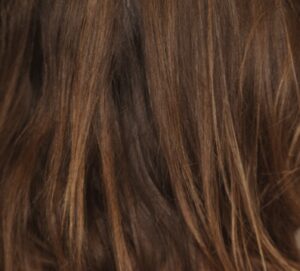Information AboutHair Shaft Defects in Children

Hair Shaft Defects

Hair Breakage
Hair Shaft Defects in Children -David A. Whiting MD.
See FAQs at the bottom of the page.
Hair shaft defects can be inherited or acquired, and sometimes may indicate underlying disease. An association of a hair anomaly with other abnormalities, especially those affecting skin, teeth and nails, is seen in many congenital syndromes. Physical or chemical injury may causes various hair shaft abnormalities, both in normal or in fragile hair. To the lay person, hair shaft defects manifest as funny-looking or poorly growing hair, which causes great parental concern. Fortunately, hair shaft defects are not common and account for only 1% of all hair disorders.
Children may be born with a good head of hair, or relatively little hair, or no hair at all. At birth, any of these may be normal events, but at 12 months of age, the average child will have diffuse scalp hair growth and by 2 years should have normal scalp hair. If funny-looking hair is present, or if scalp hair is totally absent in a child aged ³1 years old, then that should cause concern. Hair shaft defects in children may only involve certain areas such as the nape of the neck and the temples, or may affect much or all of the scalp hair. Hair shaft defects usually s how up with changes in texture or color and perhaps with unruly hairs. The hairs may be of normal strength or may be brittle and subject to breakage.
Evaluation of a child with funny-looking hair should start with a careful history of time and site of onset, subsequent progress, general health, and involvement of other family members. It is important to know whether the hair is strong or whether it is fragile and breaks off easily. A gentle pull near the tip or root of the hair can indicate its fragility or extractability. Some hair shaft abnormalities are visible to the naked eye. Others are more subtle and can only be recognized by microscopic examination, which shows irregularities, twisting or breakage of hair shafts, or extraneous matter adhering to the hair. A dermatologist with an interest in hair loss is the person most likely to make the correct diagnosis.
The commonest causes of hair fragility and breakage are cosmetic. Repeated physical injury from overzealous grooming, backcombing, braiding and traction and long exposure to heat and ultraviolet light can cause weathering and damage to the hair. Chemical injury from perm lotions, straighteners and hair dyes can cause similar changes. Rare inherited conditions like monilethrix, pili torti, trichorrhexis nodosa, and trichothiodystrophy and trichorrhexis invaginata cause brittle hair and obvious hair loss from breakage. Various other conditions, congenital or acquired, cause hair shaft abnormalities, which are not associated with fragility and breakage but lead to structural or color changes in the hair shaft. These include loose anagen syndrome, wooly hair, pili annulati and knotted hairs. Extraneous matter on hair shafts can result from certain fungal and bacterial infections, head lice, loose keratin casts from the hair follicle, and deposits from hair spray, lacquer, paint or glue.
Specific treatment for many inherited hair shaft abnormalities will not be available until the underlying genetic and molecular mechanisms have been elucidated. However, many hair shaft abnormalities are either caused or aggravated by physical and chemical assault from unwise hair grooming practices. Gentle hair care should be the prime concern. Avoid backcombing, traction, braiding, hair weaves, overexposure to sun, wind, and heat (especially from hair dryers set too high); beware of chemical damage from too many permanent waves, hair straighteners, and dyes. If shampoos are frequent, consider using suitable hair conditioners to avoid undue drying out of hair. Inflict the least possible damage to hair that is already fragile. A few patients may benefit from topical minoxidil therapy. Suitable hairpieces may be required in severe cases. A basic understanding of the hair problem is helpful for most patients.
References:
Hair Shaft Defects Frequently Asked Questions:
The following are frequently asked questions on hair shaft disorders. The information provided is not meant to be a substitute for the information obtained at an evaluation and by discussion with a physician, but merely to encourage understanding of this condition. No questions regarding individual scenarios will be answered by the AHRS. No changes in treatment should be undertaken by a patient without discussion first with the patient's physician.
